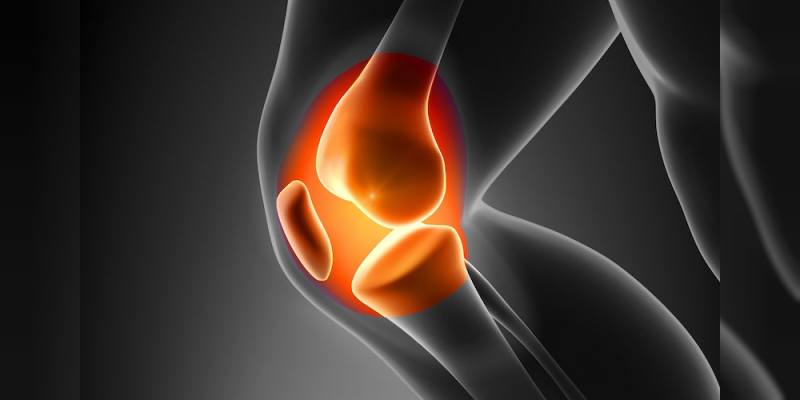The knee joint is one of the biggest and most complex joints of the body. The most likely part of this joint which is sensitive to damage is meniscus. Meniscus is a fibrocartilaginous bag in the knee. It distributes the load coming from upper body and helps the cartilage to be nourished by distributing synovial fluid. This crescent-shaped anatomical structure is located in the joint of femur and tibia. They absorb the shock acting as suspension of the body.
Meniscus tear cases are divided into young and old groups. While meniscus is torn with different reasons for each group, the treatment method is also determined according to the groups. In young people, meniscus tear is caused by active sports or reverse motion. In old group, it is caused by elasticity loss and worn cartilage by time. While injuries are seen as tearing, it can be in form of degeneration. Meniscus tear of which symptoms are swelling, jamming and difficulty in movement does not recovery by itself due to vascularisation features of the meniscus.
What are the Symptoms of Meniscus Tear?
Meniscus is torn in advanced age due to wear. Therefore, symptoms are seen with the beginning of the wear. Some of the findings are pain, jamming feel, insecurity. With trauma-depending tear observed especially in young people, instant and severe pain is felt. The paint is seen together with swelling. Insecurity (especially if there is a problem with anterior cruciate ligament) and jamming feeling can be observed.
Symptoms of meniscus tear can be listed as follows:
- Pain,
- Swelling due to liquid or blood accumulation
- Difficulty in moving
- Jamming in the knee
- Jamming voice in the knee joint,
* If the meniscus tear is accompanied with cruciate ligament rupture, insecurity and sense of space are seen.
If the meniscus tear is caused by sports trauma, old treatment should be applied to decrease swelling and the patient should walk with a stick to reduce the load on the knee.
What are the Causes of Meniscus Tear?
Meniscus tear known as sporter injury occurs due to instant direction change or stopping.
In advanced ages, meniscus loses strength and durability and degenerates, therefore tear occurs easily. Meniscus tear may occur due to a simple squat or jamming.
How is Meniscus Tear diagnosed?
First of all, a detailed physical examination is required. Complaints should be told in detail to provide a correct diagnosis. The physician may ask questions about the injury and severity of the pain. He may ask you to sit down and stand up or bend your knee. Also, MRI can be performed for the final diagnosis.
The length or severity of meniscus tear is an important factor affecting the balance after meniscus repair. Generally, tear less than 1 cm is evaluated as stable and repair is not required. As meniscus of young people responses to the treatment more effectively, repair treatment is preferred for young patients. As the patients above age of 40 tend to degeneration, tissue recovery is more difficult after meniscus repair, therefore tear may reoccur.
Non-Surgical Meniscus Tear Treatment
In the case of meniscus tear, surgery is not necessarily performed. Also, as much as possible non-surgical methods should be applied. When determining the treatment method, physicians evaluate shape, size, location of the tear, as well as age and active life of the patient. For example, generally we do not carry out surgery for patients having meniscus tear due to osteoarthritis in advanced age. We apply non-surgical methods such as resting, exercises to strengthen the muscles around the knee and using kneepad. Possibility of surgery is more likely in old group when compared to young, but it also requires some criteria. For example, if the patient does not have an active sports life, and if the location and shape of the tear are proper, we apply non-surgical methods.
Non-surgical treatment methods of a meniscus tear are as follows:
Resting: To avoid using the injured area.
Ice: To apply ice packaged on the injured area without touching directly the skin.
Compression: To provide support to the injured area, to apply an elastic bandage so as to prevent swelling.
Keeping High: To keep the area at the heart level to decrease swelling.
Crutch: To use a crutch or walking stick to prevent pressure on the joint.
Kneepad: To provide stabilization of the knee.
Caution: To avoid any kind of movement which can increase pain such as kneeling.
Medication: To use medication so as to ease the pain and swelling around the knee.
Injection: To use injection which can increase the nutrition around the knee and decrease the inflammation, swelling, and pain.
The most common injection applied to the knee for a meniscus tear is PRP. With this procedure, platelet-rich part of the blood is undergone centrifuge and injected into the knee, and it is aimed to renew the tissue.
For more information, you can read PRP treatment article.
Meniscus Surgery
Today, meniscus surgery is performed with arthroscopic methods. Arthroscopy is a closed surgery method. Instead of large incisions as in open surgery, the knee is entered through 0.5 cm incisions with cameras, and imaging and treatment are applied. With a small incision made on the knee, the damaged meniscus is repaired by imaging with the camera, or if repair is not suitable, the damaged area is removed. If the operation includes repair, recovery and rehabilitation period may take six weeks. Within this period, the patient should walk with a stick to prevent the area getting tired and to provide healing.
For more information about arthroscopy, you can read knee arthroscopy article.
To prevent meniscus tear, it is very important to do exercises that can strengthen the muscles around the knee, to avoid activities and motions which force the knee, to have a weight in accordance with body mass index and to do warm-up exercises before sports.








